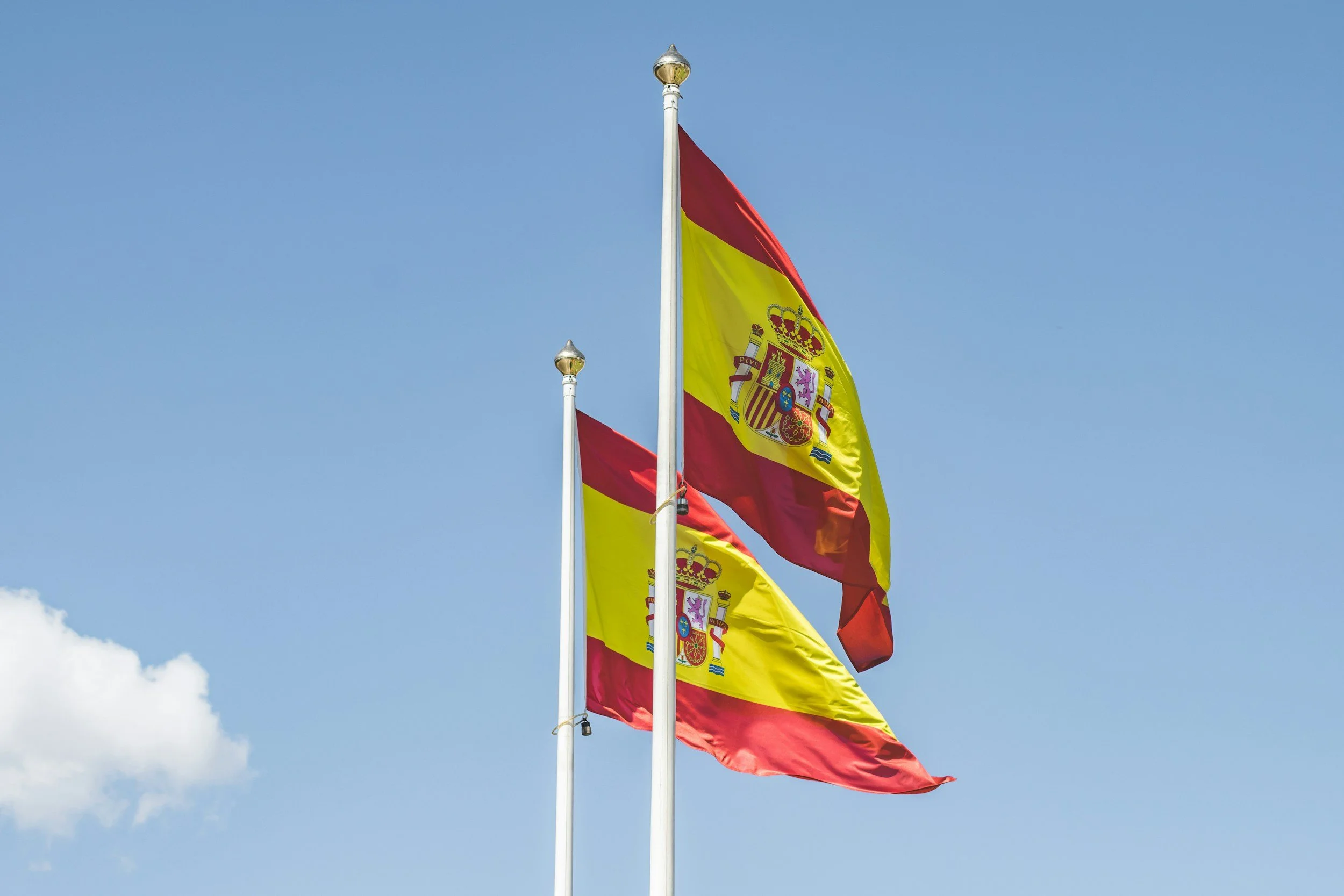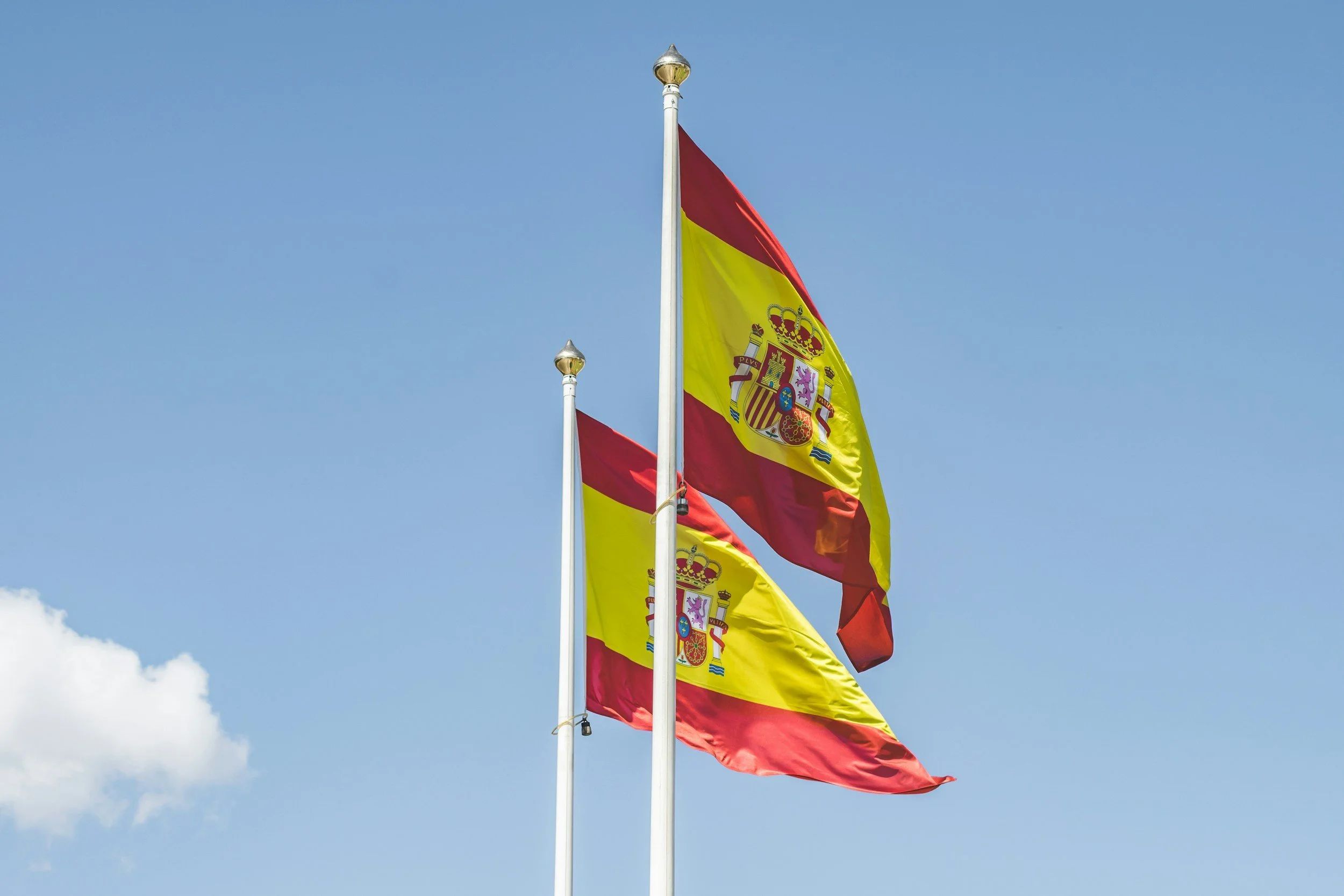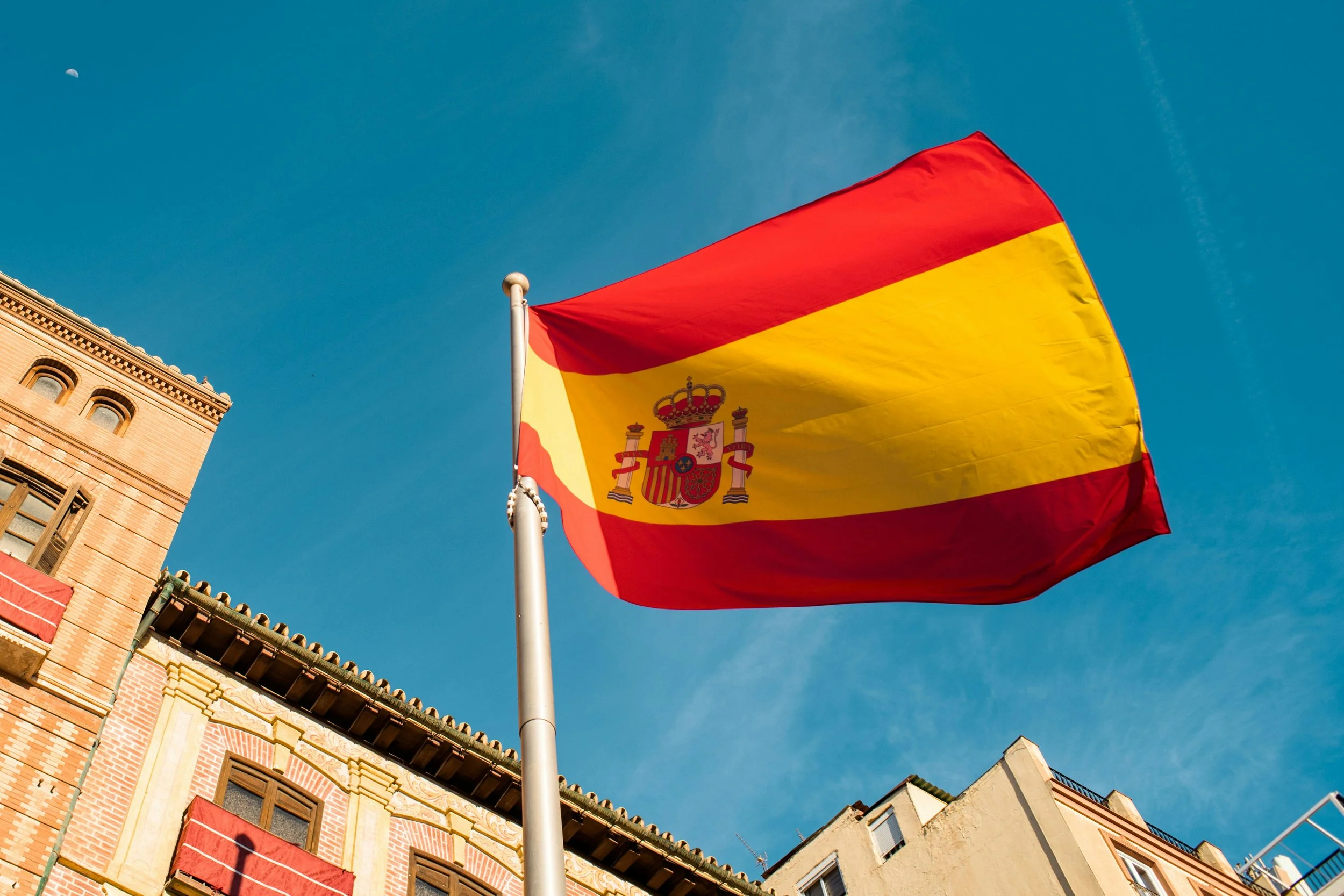Press Release Distribution Pricing for Spain in 2025
Trying to get your story published in Spain? Whether you're launching a product, announcing funding, or simply want to boost your visibility with an inexpensive press release distribution option or a more advanced strategy, figuring out how to distribute a press release here isn’t always straightforward. If you're not familiar with the local media landscape—or you’re working with a tight budget and need quick turnaround (TAT)—you’re not alone. Many businesses, especially startups and foreign brands, face the same challenge.
The reality is, there are dozens of providers and platforms claiming they’ll get your press release “out there.” But what does that really mean? Some offer guaranteed visibility, others blast your message across low-quality sites, and a few truly understand how to get picked up by respected Spanish media. This guide is here to help you navigate those options, compare price ranges, and determine which type of provider—agency, freelancer, or platform—makes the most sense for you.
1. Multinational PR Agencies
Multinational PR agencies offer strategic distribution as part of broader communications campaigns. They have access to high-level media contacts, handle localization, and often bundle press release writing, translation, and media pitching into high-cost packages.
Some of the most active multinational agencies in Spain include:
Edelman Spain
LLYC (Llorente y Cuenca)
Weber Shandwick Spain
Hill+Knowlton Strategies
Burson Cohn & Wolfe (BCW)
Pros:
Access to premium editorial relationships
Professional strategy and follow-up
Ideal for global brands and complex announcements
Cons:
High cost and often require monthly retainers
May not be cost-effective for one-off distributions
Estimated Cost Range
€3,000 to €10,000+ per campaign, depending on scope, international coverage, and deliverables, as part of broader communications campaigns. They have access to high-level media contacts, handle localization, and often bundle press release writing, translation, and media pitching into high-cost packages.
2. Local PR Agencies
Smaller Spanish agencies often offer more flexible pricing and local market knowledge. They may have stronger relationships with regional journalists and can provide tailored services for Spanish-speaking audiences.
Some reputable local PR agencies in Spain include:
Evercom
Art Marketing
Quum Comunicación
Berbés
Torres y Carrera
Pros:
Deep understanding of the Spanish media landscape
Often more accessible for SMEs and startups
Cons:
May not have international reach
Quality and professionalism can vary
Estimated Cost Range
€800 to €3,000 per project, depending on industry, scope of distribution, and whether writing and follow-up are included. and local market knowledge. They may have stronger relationships with regional journalists and can provide tailored services for Spanish-speaking audiences.
3. Freelancers
Hiring a freelancer can be cost-effective and agile. Many operate through platforms or personal networks, offering basic distribution via email and digital wire services. This makes them a popular choice for companies seeking cheap press release distribution options.
Pros:
Budget-friendly
Flexible and fast turnaround
Cons:
Varying expertise
May not offer credible or guaranteed placements €50 to €500, depending on the freelancer’s experience, target reach, and services offered.
Estimated Cost Range
€90 to €1,200+ depending on platform reach, language support, guarantees, and visibility.
4. Distribution Platforms
Specialized distribution platforms offer access to large databases and fast submission tools. While many are international, only a few have meaningful coverage in Spain. Most of these services are based in the U.S. or U.K., operate in English, and cater to global audiences.
Even though they may offer distribution options in Spain or allow you to select Spain as a region, local Spanish media often ignore their announcements due to the language barrier and lack of editorial relevance. Spanish-language releases and targeted media relationships are essential for true visibility in Spain.
Examples include:
PR Newswire Europe
Business Wire
EIN Presswire
PRWeb
News Wire
E-releases
PR Wire
Cision
Global Wire
Newswire Europe
Comunicae
Iberian Press
These platforms can be highly effective for global reach and fast online visibility. However, their role in Spanish editorial pickup is limited. On the other hand, local Spanish platforms may secure some coverage in native outlets, but if you’re targeting premium placements, expect to pay a significant surcharge for guaranteed results, and these do not always guarantee editorial value.
⚠️ Note: Some local distribution platforms promise wide distribution but often deliver placements on non-Spanish, low-traffic blogs or aggregator sites with no editorial control. Always verify the quality and editorial credibility of where your release will appear before committing.
Estimated Cost Range
€90 to €1,200+ depending on platform reach, language support, guarantees, and visibility.
Finding the Right Fit for Your Press Release Distribution Needs in Spain (WITHIN YOUR BUDGET)
There’s no such thing as truly free press release distribution if your goal is to achieve meaningful media impact. Even low-cost or do-it-yourself options come with trade-offs like a lack of credibility, minimal reach, or no editorial pickup.
Navigating the world of press release distribution can be tricky—especially if you're unfamiliar with the Spanish media landscape. Without local market knowledge, it's difficult to know which platforms or providers are effective, and which just promise broad distribution without real impact.
Always ask for:
Examples of past publications
Media lists or domains in advance
Transparency in pricing and deliverables
Reporting or analytics when available
In a competitive media environment like Spain’s, the right investment can make the difference between getting seen—or getting ignored.
Need help getting your story in front of Spanish or global audiences? Explore our International Press Release Distribution services with guaranteed publication options tailored to your brand.
The Decline of Traditional Media: A Crisis in Journalism
In the ever-evolving landscape of media consumption, the decline of traditional media outlets is a phenomenon that demands attention. From newspapers to television networks, the pillars of traditional journalism are facing unprecedented challenges, with ramifications extending far beyond the newsroom. As a PR professional deeply entrenched in the media ecosystem, it's imperative to dissect this issue and explore its multifaceted implications.
A Dwindling Readership and Influence
The traditional media, once revered as the gatekeepers of information, are experiencing a steady erosion of readership, reach, and influence. In an era dominated by digital platforms and social media, audiences are increasingly turning away from conventional sources of news and information. Circulation figures plummet, advertising revenues dwindle, and newsrooms shrink as media organisations grapple with the shifting sands of consumer behaviour.
The decline in readership is not merely a statistical blip but a reflection of broader societal trends. With the rise of digital alternatives and the ubiquity of smartphones, consumers have unparalleled access to a myriad of information sources at their fingertips. The immediacy and convenience offered by online platforms have reshaped how audiences consume news, relegating traditional media to the periphery of public consciousness.
The Shrinking Landscape of Journalism
Compounding the woes of traditional media is the dwindling cadre of journalists, whose ranks are thinning at an alarming rate. In Spain and beyond, newsrooms are witnessing a mass exodus of seasoned professionals, leaving behind a void that is difficult to fill. The reasons for this exodus are manifold, ranging from budgetary constraints to the allure of alternative career paths in the digital realm.
The decline in the number of journalists is not just a matter of personnel but a symptom of a deeper malaise afflicting the industry. As news organisations grapple with financial pressures and existential crises, the very essence of journalism is under threat. Investigative reporting, long-form journalism, and in-depth analysis—all hallmarks of traditional media—are casualties of this seismic shift, depriving society of critical voices and perspectives.
The Rise of Social Networks: A Double-Edged Sword
In the vacuum left by traditional media, social networks have emerged as powerful arbiters of public opinion, wielding influence on an unprecedented scale. Platforms like Facebook, Twitter, and Instagram have become virtual town squares where ideas are exchanged, opinions are formed, and narratives are shaped. The instantaneous nature of social media allows information to spread like wildfire, transcending geographical boundaries and ideological divides.
However, this newfound influence is not without its pitfalls. Unlike traditional media, which adheres to ethical standards and professional norms, social networks operate in a largely unregulated landscape. The proliferation of fake news, misinformation, and sensationalism has eroded trust in the media ecosystem, blurring the lines between fact and fiction. In the absence of editorial oversight, algorithms dictate what content reaches the masses, perpetuating echo chambers and reinforcing existing biases.
Navigating the Digital Paradigm Shift
As PR professionals, it is incumbent upon us to navigate the tumultuous waters of the digital paradigm shift with agility and foresight. The decline of traditional media necessitates a recalibration of communication strategies, wherein digital platforms assume greater prominence in our outreach efforts. Embracing social media, content marketing, and influencer partnerships can help bridge the gap between brands and audiences in an increasingly fragmented media landscape.
At the same time, we must remain vigilant guardians of truth and integrity in an age of rampant misinformation. By championing transparency, authenticity, and accountability, we can uphold the principles of ethical communication and mitigate the spread of falsehoods. Collaborating with reputable media outlets and supporting independent journalism initiatives can also play a pivotal role in preserving the integrity of the fourth estate.
In conclusion, the decline of traditional media represents a watershed moment in the annals of journalism—a reckoning that demands introspection and innovation in equal measure. While the challenges may seem daunting, they also present opportunities for growth, adaptation, and reinvention. By embracing change with resilience and resolve, we can navigate the currents of disruption and emerge stronger on the other side. Let us seize the moment and shape the future of media in a manner that befits its indispensable role in society.
Key Messages in a Communications Strategy
Key Messages in a Communications Strategy - túatú Spain
Key messages are statements which synthesize the information of a message in a clear and simple way. Distinguished, specifically, for being very succinct.
They are announcements which have the intention of communicating just one subject (an idea, a concept, a fact, an indication, etc).
An effective key message cannot leave room for interpretation or second meanings. Furthermore it cannot be too brief or too extensive because it may not explain much or confuse the public respectively.
EFFECTIVE KEY MESSAGES CANNOT BE EDITED BY THE MEDIA, DUE TO THE FACT THAT THEY ARE INFORMATION IN A PURE STATE.
For example, some politicians use cryptic phrases or rhetorical speeches which are endless. This language can be good material for analysts, but they are far from being effective key messages in its transmission to the general public.
It is vital that the key messages have content, in other words, they cannot be rhetorical, otherwise they will not arouse interest from anybody and they will not fulfill their communication goal. This may seem obvious, but it is a frequent error made by those who present speeches full of sensationalism which has little relevant content for the public.
The inclusion of emotional references can be considered during the elaboration of key messages, as long as it is not used carelessly or superficially, its exploitation should have a main reason behind it.
The dynamic of the media may leave little space for the preparation of all the news which determine the present day. For this reason, when the broadcast of a message is made by a spokesperson in a clear, concise, ordered and attractive way, it will simplify the reporter’s labor, who will probably use these declarations with the minimum of cuts.
The technique used to prepare key messages can be practiced by any spokesperson and it is also valid in order to assist in the elaboration any type of speech. Moreover, key messages are an exercise which may help those who are not necessarily great speakers, but have the duty to communicate to the public through the media.
We are talking about heads of various organizations that were not prepared to face a public appearance or an interview.
Journalists look for the concrete set of words of an individual and they appreciate it when they are able to transmit their ideas in plain words and short phrases but rich in content. A spokesperson with clear ideas and an accurate language creates far much more affinity than someone who speaks in a way which is diffuse and redundant.
Now we will review two examples of how the technique of key messages is well used.
WHEN COMMUNICATING IS VITAL
<<Remain calm and evacuate downtown Manhattan. My heart is with all of you. I’ve never seen anything like that. (…) I can only say that we will use all the resources we have to try to rescue as many people as possible. (…) Those in charge in the city are alive and we are evaluating the situation>> These were the words that Rudolph Giuliani, who at the time was the mayor of New York, said right after the terrorist attack of September 11th.
Simple phrases but full of meaning and integrity, in the middle of the great catastrophe and confusion, helped the people of Manhattan maintain calm and act in an orderly way and trust that things were under control.
Rudolph Giuliani took every opportunity he had when he was near to journalists to address the issue to the New Yorkers and transmit these messages.
Key messages are the axis of every public relations campaign, and so they must permeate all the documents that are given to the press (notes and dossiers), speeches of the spokespeople, institutional advertisements and in any information that is spread by the organization.
Media relations Spain: Top 5 Way to Prepare for a Media Interview
Media relations Spain: Top 5 Way to Prepare for a Media Interview
No, you can't control how the interview will be conducted, nor can you control the outcome. But you can influence it greatly by the way you present your personality and your skills. Being interviewed is an opportunity for the interviewee to showcase their business, interest, or cause. Keep in mind that journalists are doing a job - they have deadlines to meet and word counts to adhere to. Knowing how to talk to the press can help improve your chances of receiving favorable media coverage.
However, to make the interview memorable and successful takes preparation. Here are a few tips that you can use when preparing for every interview including virtual book tours, blog radio interviews, live teleseminars, recorded interviews and traditional media interviews:
1. Prepare
When live on radio or television there is only one chance to get it right. Since you have more knowledge about the subject, its ideal to think about possible questions and also prepare your answers. Find out as much as you can about the program if it is pre-recorded or live? What are they expecting from you and what angle will you be talking from? - What are the question areas? Think about your most useful, interesting and relevant points to the appropriate audience.
2. Know your message
Have a few key talking points in mind and stick with them as much as you can during the interview. Have the facts and research prepared to back up these points and come up with a few anecdotes and have some examples ready to illustrate your points. Practice delivering your messages beforehand, so you weed out awkward phrases and prevent yourself from stumbling through your key points.
3. Be Buoyant & Enthusiastic
During an interview, boring answers will probably be edited out, and boring interviews will be dropped entirely. So make your delivery bright and enthusiastic, rather than boring and dull. Remember broadcasting is a performance! If you do not hold the audience's attention, there are plenty of rival channels people can switch over to.
4. Make It Interesting and Relevant
This is especially important in television and radio - both entertainment mediums. The more engaging you are, the easier it is for the interviewer to produce an exciting piece for their audience. Remember, you are in the spotlight, so act accordingly. Remember to stress the points that are likely to interest the listeners or viewers rather than just your internal messages.
5. Call to Action
Most people will remember the opening and closing of a radio interview. Always have a strong closing with a call to action, something you want listeners to do, i.e., attend the event or buy the product. And finally, remember to smile - when you smile you feel and sound much friendlier - and enjoy it!
Today, with the growing popularity of media, audiences in Spain, media interviewing is an effective way to reach and build credibility with a broad audience. Knowing how to talk to the press will ensure your key messages are clear and powerful - it's just another sale.




















